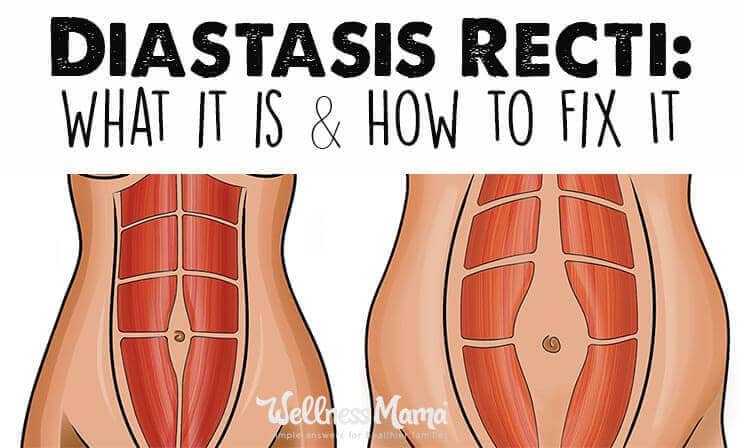Diastasis Recti: What It Is And How To Help Fix It
Diastasis recti, also known as abdominal separation is commonly defined as a gap of roughly 2.7cm or greater between the two sides of the rectus abdominis muscle. This muscle covers the front surface of the belly area.
During pregnancy, the growing uterus stretches the muscles in the abdomen. This can cause the two large parallel bands of muscles that meet in the middle of the abdomen to separate. A condition called diastasis recti or diastasis recti abdominis. Diastasis recti might cause a bulge in the middle of the abdomen where the two muscles separate.
Watch this clip on how to test to see if you have abdominal separation or diastasis recti:
Doing a standard crunch or sit-up is generally not recommended for postpartum women wanting to exercise. Especially when we know a diastasis recti or abdominal separation is present. This is because the way a crunch is generally performed has the effect of severely increasing intra abdominal pressure. This pushes your organs outwards against or through the gap, and downwards onto the pelvic floor. All directions you really don’t want your organs forcefully heading.
The following are three safe exercises you can practice at home. These will help strengthen the correct abdominal muscles and attempt to bring the separation closer.
Hip Rolls
- Lay on your back with your knees bent and feet together {or hip-width if that feels better for your back}.
- Exhale to gently lift up on your pelvic floor muscles, pressing your knees together while simultaneously articulating your spine up into a bridge position. Avoid your ribs “popping.”
- Inhale to hold position feeling the back of your legs and lower belly doing holding your hips up.
- Exhale to slowly articulate rolling your spine back down one vertebrae at a time, initiating the movement by gently drawing your ribcage down.
- Continue for 5 to 10 reps slowly.
Arch + Round
A great exercise to help you find your pelvic floor and transverse abdominal connection:
- Sit your hips back but only go so far as to keep your back in an arch. Relax your pelvic floor muscles.
- Exhale as you gently start to lift and activate your pelvic floor along with gently zipping up your transverse abdominals {think lower belly} to move your pelvis to a tucked position as you lift your hips up {see image above to help give you a visual.
- Inhale as you sit back to start and relax your deep core muscles {including your pelvic floor}.
- Repeat for 3 to 6 reps.
Squats and Rotations:
- Standing in a comfortable wide squat {sticking your booty slightly back} and your arms out in front {holding an exercise band or hand towel if you have either}.
- Exhale as you stand {keeping your glutes engaged} rotating towards your right as your left leg and toe pivot with you allowing easy rotation of your hips and your arms reach up overhead. You should feel a light core connection, your booty working and lengthening of your spine.
- Inhale as you return to your starting squat position.
- Then rotating to your left making sure that your right leg and toe pivot with you.
- Continue for 10 to 20 reps alternating sides slowly.













